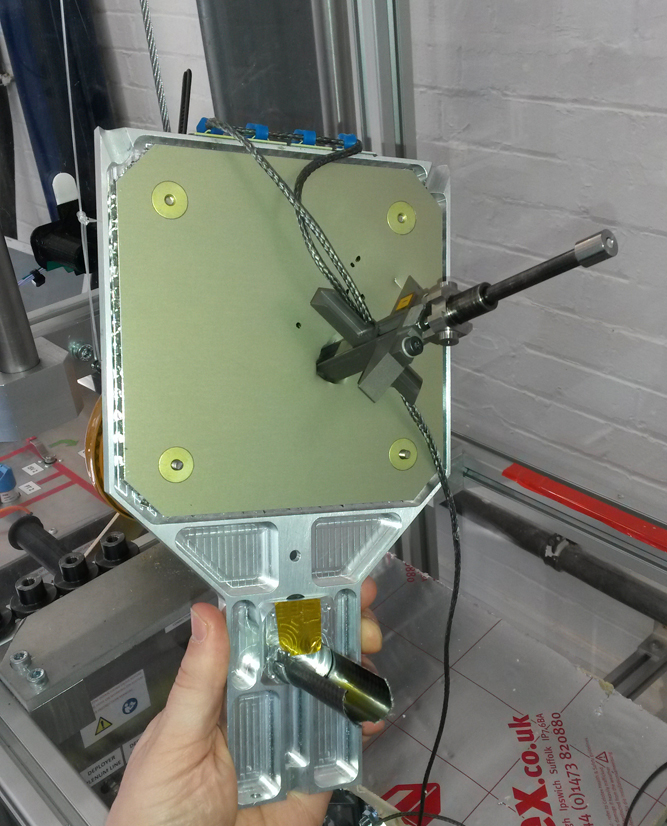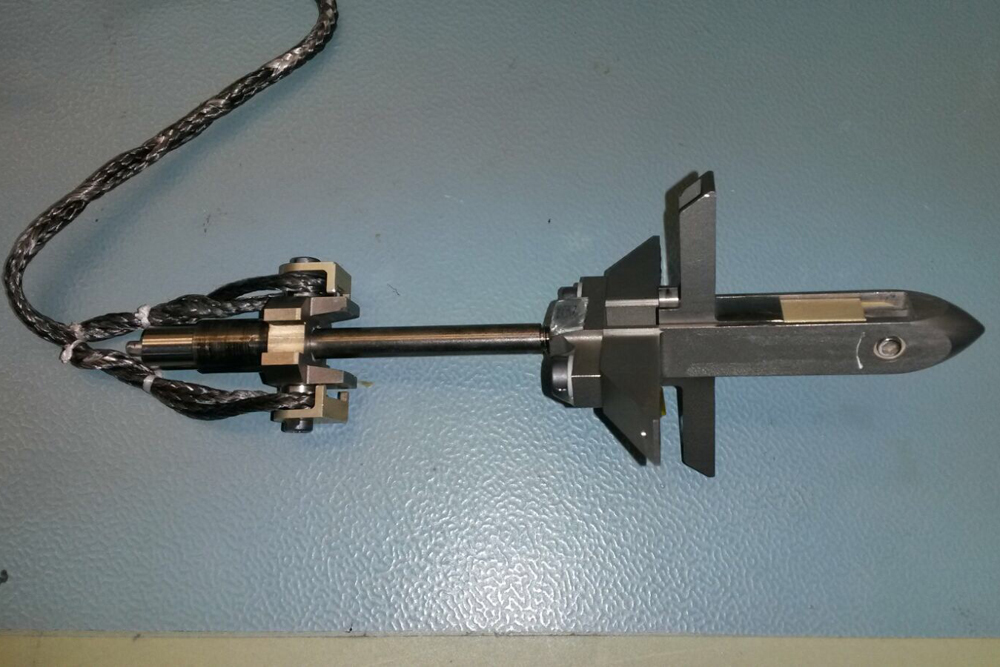Watch a Satellite Fire a Harpoon in Space in Wild Debris-Catching Test (Video)
A harpoon designed to capture orbital junk has been successfully tested in space for the first time as part of the active debris-removal demonstration mission called RemoveDebris.
The pen-size titanium harpoon developed by Airbus engineers in the U.K. was fired on Feb. 8 into an aluminum target, which extended from the spacecraft attached to a carbon-fiber boom. During the test, it successfully snagged the target out of orbit and reeled it back to the main spacecraft.
"It's been a really successful test and gives us really good confidence in the harpoon technology that has been developed," Alastair Wayman, advanced project engineer at Airbus who was responsible for the design of the experiment, told Space.com."We have tested it extensively on the ground but obviously, there are things that we can't completely simulate on the ground." [Photos: Space Debris Images & Cleanup Concepts]
The ground-control team, based at Surrey Satellite Technology Ltd. (which built the spacecraft) in Guildford, the U.K., had to wait for three days to download all the data to make sure that the experiment, which was captured in slow-motion video, went as planned. "The ground-control team had to upload a series of commands for the harpoon and the spacecraft, which the spacecraft then autonomously executed when it was at the right angle to the sun so that we could get a good video of the experiment," Wayman said.

Once the engineers could review all that data, they confirmed that the harpoon hit the target at a speed of 65 feet per second (20 meters per second). After the tip of the harpoon penetrated the panel, a spring-loaded mechanism deployed an array of barbs to secure the harpoon firmly in place. The carbon-fiber boom the target was attached to didn't withstand the force of the impact and snapped. Wayman said the engineers expected this could happen and they secured the harpoon with a tether to make sure the experiment didn't create additional space debris.
The vacuum environment and the thermal conditions in orbit could also have had an impact on the equipment, Wayman said. "The tether may have ended up being stiffer than we anticipated due to the temperature, and the interaction between the projectile and the target may have behaved differently than we have anticipated," Wayman said. "But actually, the behavior in orbit and in the ground testing was very similar. We got the same accuracy that we expected, we got the same firing speed and we successfully captured the target, and doing that in space didn't have an impact on the operation."

Wayman said that the Airbus team will continue developing the technology, which was originally considered for the European Space Agency's planned active space-debris-removal mission e.Deorbit. That mission is expected to launch in the mid-2020s and remove a defunct Earth observation satellite called Envisat, which is one of the largest and therefore most dangerous pieces of space debris cluttering low Earth orbit. The agency, however, eventually decided to redesign the mission as a multipurpose vehicle and use a robotic arm instead.
Get the Space.com Newsletter
Breaking space news, the latest updates on rocket launches, skywatching events and more!
The harpoon test this month was the penultimate experiment of the $18.7 million (15.2 million euros) RemoveDebris mission. The spacecraft, the first in history to demonstrate active space-debris-removal technology in orbit, was released into space from the International Space Station in June 2018. It commenced its test campaign in September with another Airbus-led experiment, which demonstrated how a small cubesat could be captured with a net. Shortly after that, RemoveDebris tested optical navigation technology that could be used to locate and target debris in orbit. [Latest News About Space Junk and Orbital Debris]
"The harpoon was RemoveDebris' most demanding experiment and the fact that it was a success is testament to all involved," Guglielmo Aglietti, the mission's lead investigator and the director of the Surrey Space Centre at the University of Surrey, said in a statement. "The RemoveDebris project provides strong evidence of what can be achieved with the power of collaboration — pooling together the experience across industry and the research field to achieve something truly remarkable."
The mission will conclude in the next few weeks with the deployment of a drag sail that will speed up the RemoveDebris spacecraft's deorbit. The ground-control teams will attempt to maintain contact with the fridge-size spacecraft for as long as possible to gather data about the drag sail's performance.
Active space-debris-removal technologies are becoming critical as the environment around the Earth becomes more and more cluttered. Experts say that it will be necessary to remove five large objects from low Earth orbit per year to prevent a dangerous cascade of collisions predicted by NASA scientist Donald Kessler in the 1970s and now known as the Kessler syndrome.
Follow us on Twitter @Spacedotcom and on Facebook.
Join our Space Forums to keep talking space on the latest missions, night sky and more! And if you have a news tip, correction or comment, let us know at: community@space.com.

Tereza is a London-based science and technology journalist, aspiring fiction writer and amateur gymnast. Originally from Prague, the Czech Republic, she spent the first seven years of her career working as a reporter, script-writer and presenter for various TV programmes of the Czech Public Service Television. She later took a career break to pursue further education and added a Master's in Science from the International Space University, France, to her Bachelor's in Journalism and Master's in Cultural Anthropology from Prague's Charles University. She worked as a reporter at the Engineering and Technology magazine, freelanced for a range of publications including Live Science, Space.com, Professional Engineering, Via Satellite and Space News and served as a maternity cover science editor at the European Space Agency.









